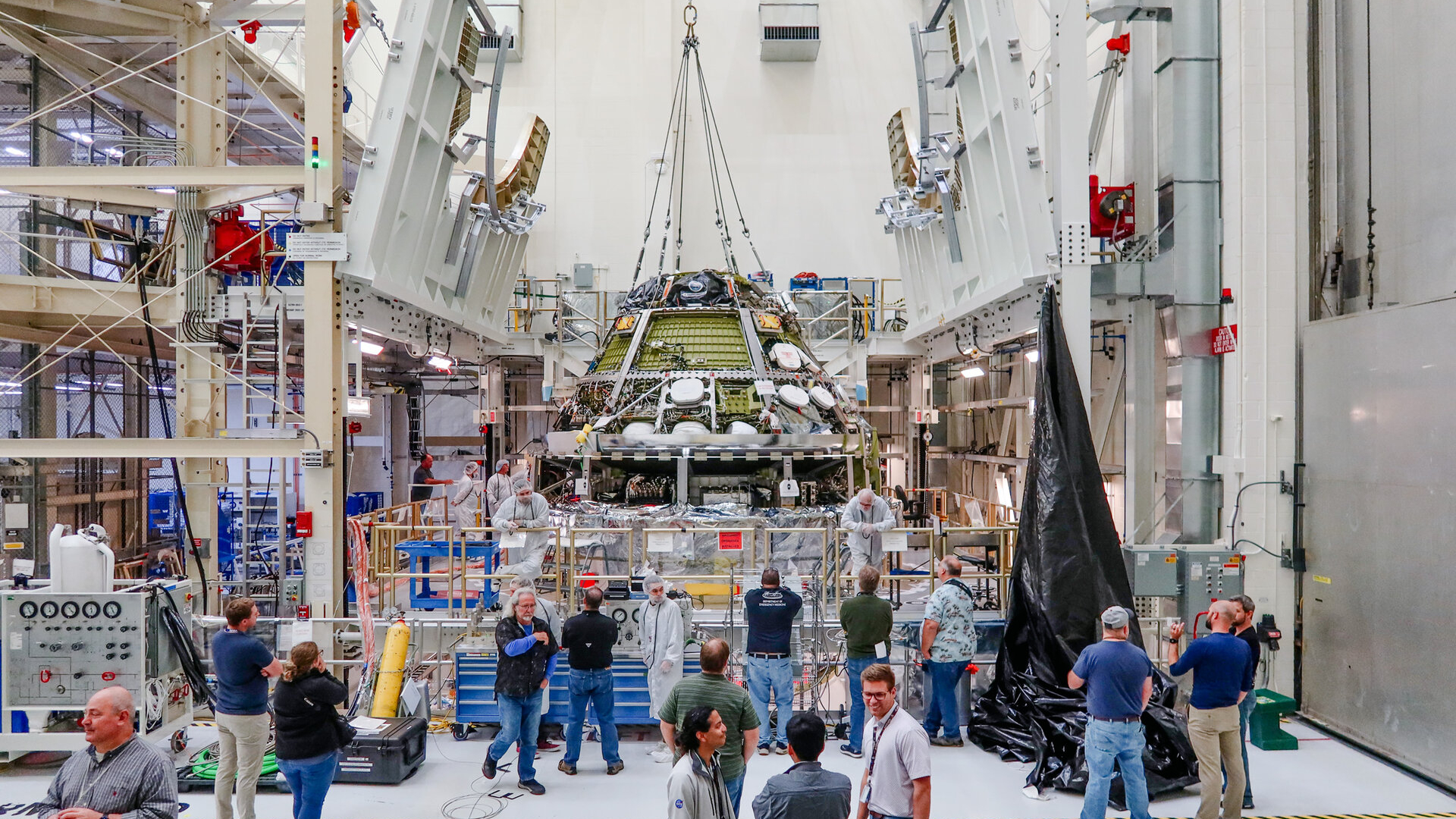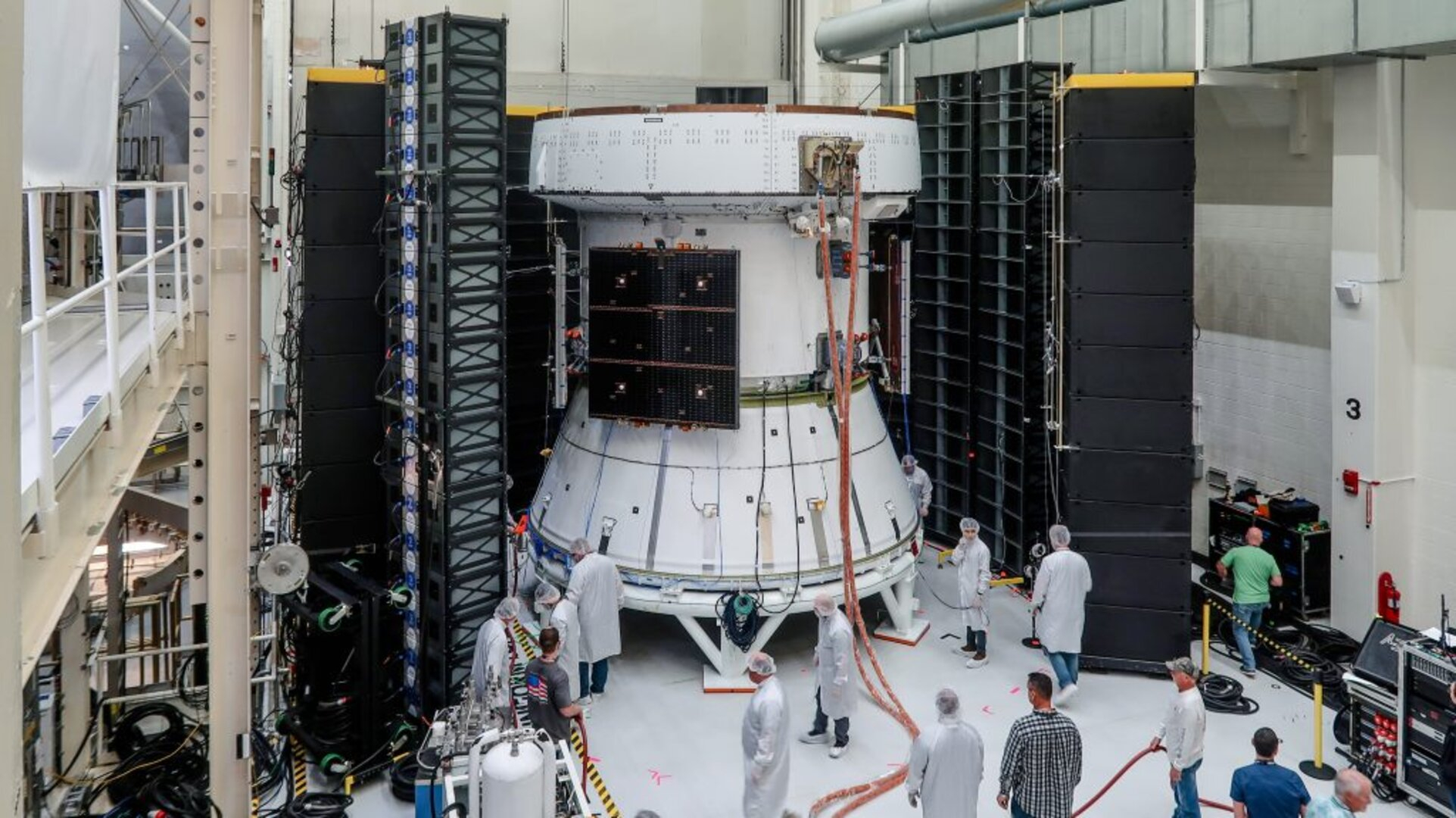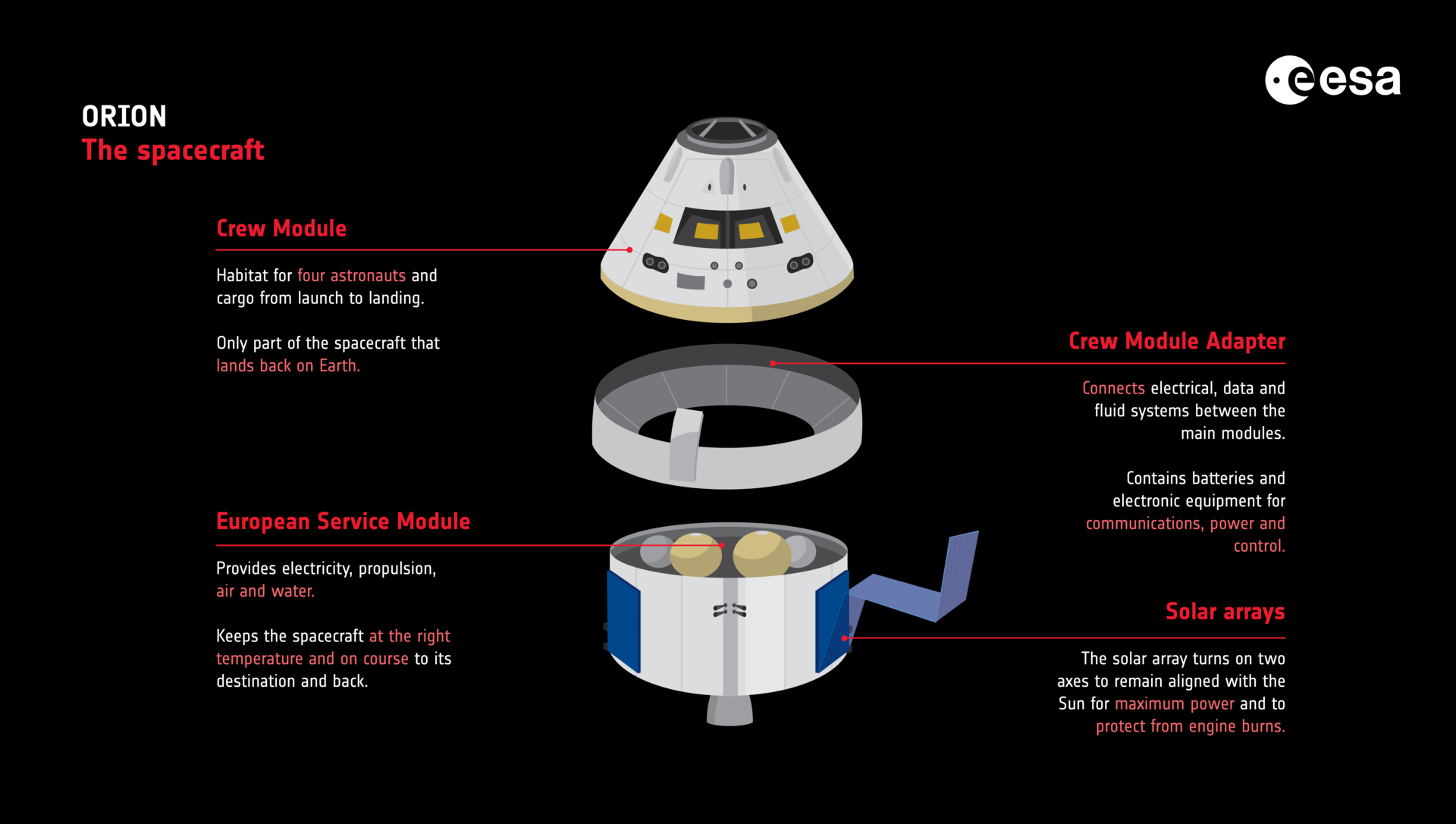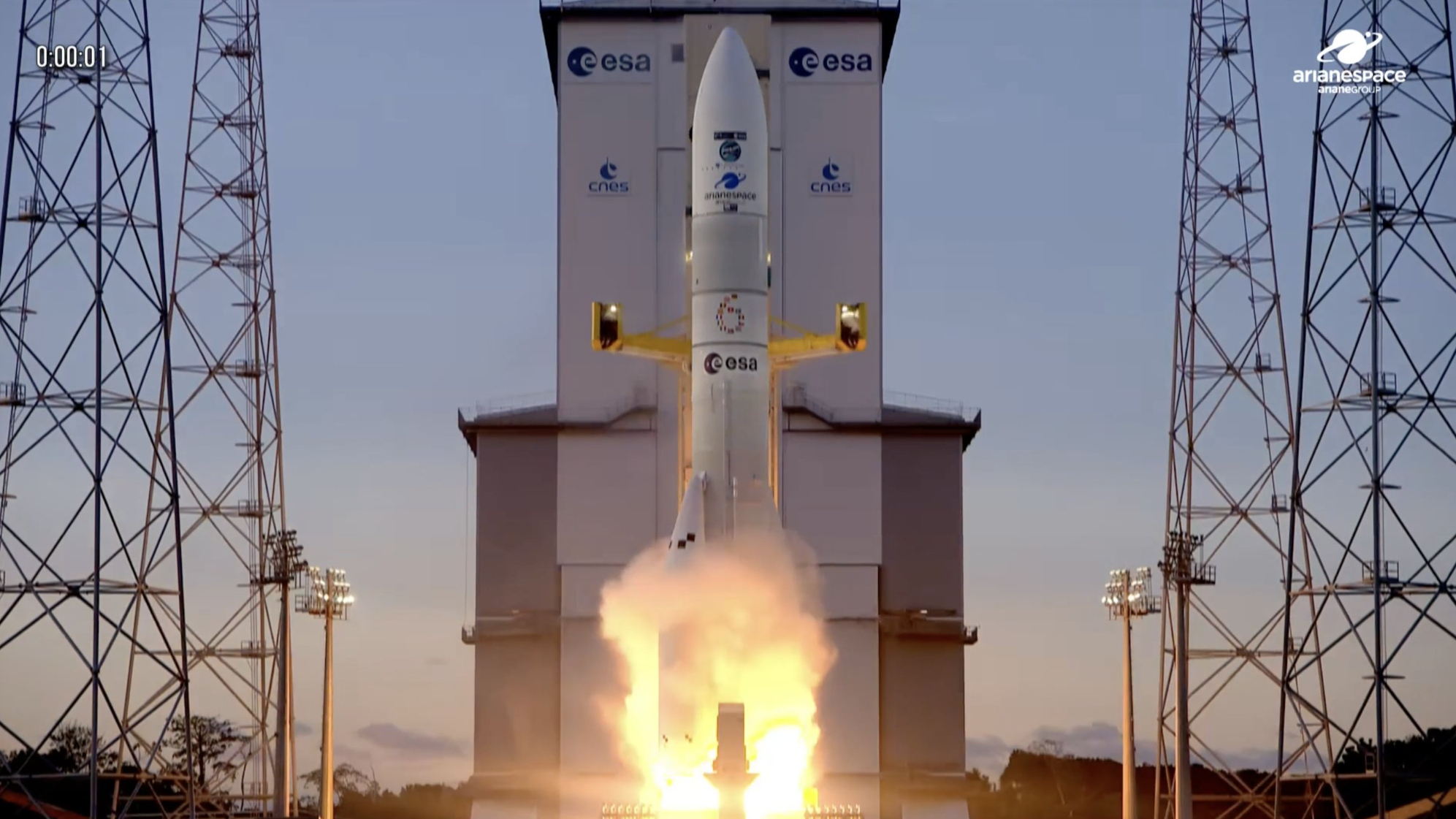Artemis 2 Orion spacecraft comes together ahead of 2024 moon mission (photos)
A rigorous set of tests will make sure Orion is ready for its mission.

NASA's first moon spacecraft for astronauts in 50 years is coming together.
The Orion spacecraft for Artemis 2, set to fly around the moon in 2024 with a crew of four, saw its crew and service modules joined at NASA on Oct. 19. Next will come a rigorous series of tests to ready it for the big lunar journey, agency officials said in a statement.
"The team will power up the combined crew and service module for the first time," NASA officials stated on Oct. 23. "After power-on tests are complete, Orion will begin altitude chamber testing, which will put the spacecraft through conditions as close as possible to the environment it will experience in the vacuum of deep space."
Related: How Artemis 2 astronauts are training for their 2024 moon mission
The Orion spacecraft includes the European Space Agency's (ESA's) service module built by Airbus Defence and Space, which provides electricity, propulsion, air and water; a U.S. crew module led by Lockheed Martin that will house the four astronauts; and a U.S. crew module adapter that joins the service and crew modules together and connects their electrical, data and power systems.
ESA's service module arrived at NASA's Kennedy Space Center about two years ago, in October 2021, undergoing tests ahead of the big join at the Neil Armstrong Operations & Checkout Building nearby the Florida launch pad.

"Two important tests include the thermal cycle test – which assessed how well the spacecraft will withstand the extremes of temperature – and the direct field acoustic test (DFAT), which assessed how well the spacecraft will withstand the vibrations of its launch to the moon," ESA officials wrote in their own statement Tuesday (Oct. 24), noting the joining of the modules is a milestone as the U.S. and European-made modules are now communicating with each other.
Breaking space news, the latest updates on rocket launches, skywatching events and more!
The crew and service modules are connected at six points surrounding the crew module's heat shield, ESA officials added. "Data and power connections and pipes for fluids between the sections are routed to go around the heat shield instead of crossing it," they added.
In 2024, ESA's statement added, more construction milestones will accrue: Adding the solar wings, filling the tanks with propellant, then connecting the completed Orion with the launch abort system that will rocket astronauts to safety in the event of an anomaly. All of this will be mounted on NASA's powerful Space Launch System rocket for launch day.
Astronaut training is continuing for Artemis 2. Coming up soon will be Earth orbit operations at NASA's Johnson Space Center, such as camera training for geology operations. Medical training and a simulated recovery exercise for splashdown day are coming up soon as well, NASA officials wrote in an Oct. 19 statement. Other big checkmarks of note in recent weeks include a liftoff dress rehearsal and geology training.
The four astronauts aboard Artemis 2 include NASA commander Reid Wiseman, NASA pilot Victor Glover (the first Black person to leave low Earth orbit), NASA mission specialist Christina Koch (the first woman) and Canadian Space Agency mission specialist Jeremy Hansen (the first non-American).
Canada is a part of the NASA-led Artemis Accords, which cover both moon exploration and peaceful norms of working in space. Hansen's seat (and seats for other missions) come thanks to the country's contribution of Canadarm3, a robotic arm slated to work on NASA's future Gateway space station orbiting the moon.
Artemis 2 is the second in NASA's larger Artemis program. An uncrewed mission called Artemis 1 flew around the moon and back in 2022. Next up will be a crewed landing mission, Artemis 3, set for 2025 or 2026 depending on the progress of spacesuits and the landing system.

Elizabeth Howell (she/her), Ph.D., was a staff writer in the spaceflight channel between 2022 and 2024 specializing in Canadian space news. She was contributing writer for Space.com for 10 years from 2012 to 2024. Elizabeth's reporting includes multiple exclusives with the White House, leading world coverage about a lost-and-found space tomato on the International Space Station, witnessing five human spaceflight launches on two continents, flying parabolic, working inside a spacesuit, and participating in a simulated Mars mission. Her latest book, "Why Am I Taller?" (ECW Press, 2022) is co-written with astronaut Dave Williams.

